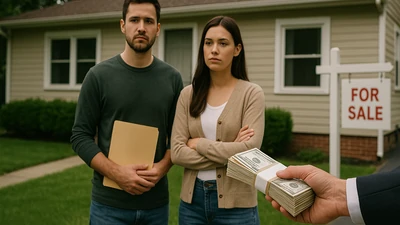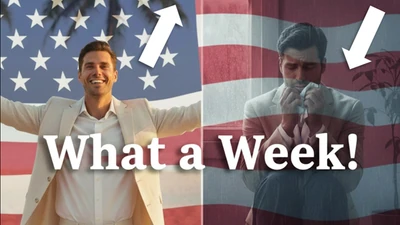As a die-hard sports memorabilia collector, I live for the thrill of snagging a piece of sports history—like a signed bat that practically hums with the echoes of a game-winning homer. But let’s be real: the only thing worse than striking out at a game is dropping cash on a forged signature that looks like it was scribbled by my dog. Over the years, I’ve crafted a foolproof (well, mostly foolproof) process to validate items before buying, saving me from fakes and a few awkward dinner party stories. Here’s my guide to navigating the wild world of sports memorabilia, with a few chuckles along the way.
Why Validation Matters
Picture this: I’m browsing online, heart racing, eyeing a “signed” Mickey Mantle baseball priced like a clearance rack T-shirt. I was ready to hit “buy” faster than a fastball, but a little voice (or maybe my empty bank account) said, “Slow down, champ.” Good thing, too—that ball was as real as a unicorn. The sports memorabilia market is a jungle, with forgeries lurking like sneaky base stealers—some say up to 50% of autographed items are fake. Validating your purchases isn’t just about saving money; it’s about ensuring your collection doesn’t become a shrine to someone’s bad Sharpie skills.
Step 1: Start with Reputable Sellers
I always kick things off by vetting the seller, because buying from a shady source is like trusting a hot dog vendor to perform surgery. I stick to big names like Fanatics Authentic, Steiner Sports, or PSA/DNA-certified dealers, who treat authentication like it’s their day job (because it is). On eBay, I dig into the seller’s feedback score, read reviews, and make sure they’re not just selling “authentic” Elvis bobbleheads on the side. At memorabilia shows, I gravitate toward booths flashing legit credentials, not just a guy with a folding table and a dream. A recent X post from a fellow collector nailed it: “Bought a ‘signed’ jersey from a flea market sketchball. No COA, no glory. Lesson learned.”
Step 2: Demand a Certificate of Authenticity (COA)
A Certificate of Authenticity is my trusty sidekick, like Robin to my Batman. Reputable sellers provide COAs from heavy hitters like PSA/DNA, JSA, or Beckett Authentication Services, detailing the item’s backstory like a sports documentary. When I snagged a signed Wayne Gretzky puck, the PSA/DNA COA had a serial number I could verify online—faster than you can say “hat trick.” I always double-check the COA by contacting the authenticator or visiting their site. If the COA looks like it was whipped up in Microsoft Word or, worse, photocopied at a gas station, I’m out the door quicker than a sprinter at the starting gun.
Step 3: Research Provenance
Provenance is the item’s origin story, and I want it juicier than a post-game interview. I ask sellers: Was this signed at a specific event? A team auction? A player’s garage sale? (Okay, maybe not that last one.) For big-ticket items like game-worn jerseys, I demand photos, videos, or letters tying it to a specific moment—like when I bought a Michael Jordan signed photo with a ticket stub from the signing event, which I cross-checked like a detective on a crime show. Vague provenance? That’s a foul ball in my book.
Step 4: Inspect the Item Closely
Time to channel my inner CSI. For autographs, I scrutinize the signature’s flow, pressure, and quirks—real ones have personality, while fakes look like they were drawn by a robot with a caffeine problem. I compare them to verified signatures in PSA/DNA’s online gallery. For game-used gear, I check for battle scars—sweat stains, scuffs, or stitching that screams “I’ve been through a game.” When I scoped out a Tom Brady game-used glove, the frayed edges and questionable sweat marks (ew, but authentic!) sealed the deal. Buying online? I demand HD photos or a video call to inspect the item, because blurry pics are as trustworthy as a used car salesman.
Step 5: Leverage Third-Party Authentication
When my spidey senses tingle, I call in the pros. For a Babe Ruth-signed ball I was drooling over, I sent it to PSA/DNA before signing the check. Their experts dissected the ink and paper like it was a science fair project, confirming it was the real McCoy. Sure, authentication fees (starting around $50) sting a bit, but it’s cheaper than framing a fake. I’ve also used PSA/DNA’s “quick opinion” service for a sneak peek. X discussions with other collectors help me pick reliable authenticators—because nobody wants to be the guy who bought a “Ruth” ball signed by Ruth from accounting.
Step 6: Be Skeptical of Deals Too Good to Be True—Even at Estate or Garage Sales
If a price seems too low, it’s usually a red flag—like finding a Rolex in a cereal box. But sometimes, the memorabilia gods smile, and you stumble across a gem at an estate sale or garage sale. I once found a signed Willie Mays baseball at an estate sale, buried in a box next to a creepy porcelain clown. It was priced like a yard sale knickknack, but I didn’t pop the champagne yet. Even at these treasure hunts, fakes are as common as mismatched Tupperware. For that Mays ball, I grilled the seller for a COA, got a story about it coming from a retired coach’s estate, and had JSA verify it before celebrating. I always check market prices on Heritage Auctions or Sotheby’s to ensure I’m not overhyping a deal. If it’s too good to be true and lacks paperwork, I walk away faster than a fan leaving a blowout game.
Step 7: Stay Educated and Connected
The memorabilia world changes faster than a pitcher’s curveball, so I stay sharp. I devour industry blogs, follow authenticators on X, and haunt collector forums to keep up with forgery trends and cool new tech like blockchain COAs. Connecting with other collectors is like having a team in your dugout—last year, a buddy tipped me off about a wave of fake Kobe Bryant signatures, saving me from a slam-dunk mistake. The community keeps my collection legit and my stories lively.
My Final Thoughts
Validating sports memorabilia is part science, part instinct, and a whole lot of fun—like solving a puzzle while dodging a curveball. Whether I’m scouring auction houses, browsing eBay, or rummaging through a garage sale’s dusty boxes, I stick to my playbook: vet sellers, demand COAs, dig for provenance, inspect like a hawk, call in authenticators, stay skeptical (even when I’m dreaming of a steal), and keep learning. This approach has built a collection that makes my heart race—from a signed Derek Jeter bat to a game-worn Patrick Mahomes helmet, each piece a verified slice of history. My advice? Take your time, do your homework, and enjoy the hunt. Whether it’s a high-end auction or a garage sale score, the right piece is worth the effort—especially if it doesn’t come with a side of regret.










